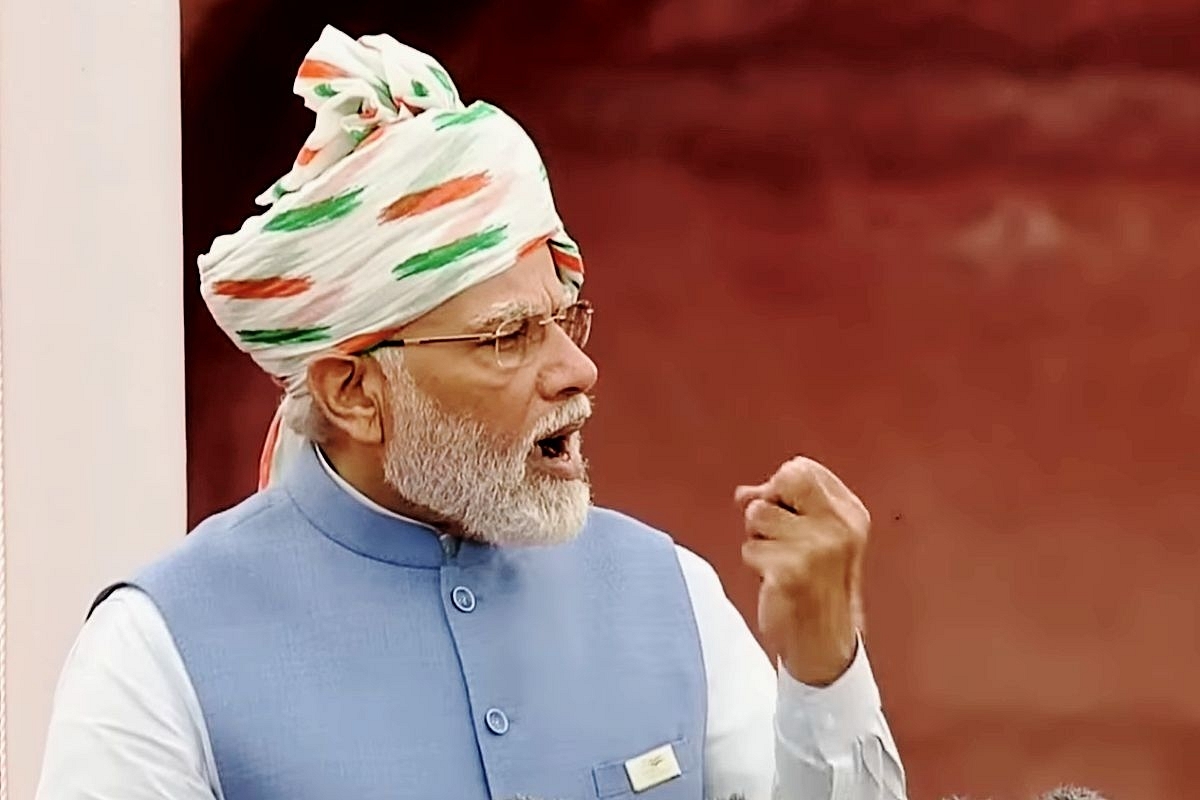Context
Jai Anusandhan: R&D To Pave The Way For India's Amrit Kaal

Prime Minister Narendra Modi at the Lal Qila on 15 August
In his Independence day address, PM Modi stressed the need for research, development and innovation to drive Indian economic dreams.
India's techade: The coming twenty years, dubbed as the Amrit Kaal by the Prime Minister, have the potential to propel India into an orbit of prosperity.
PM Lal Bahadur Shastri had coined the slogan Jai Jawan, Jai Kisan, an apt phrase for the 1960s when India faced the twin challenges of wars and food insecurity.
Later, PM Atal Bihari Vajpayee added Jai Vigyan to this statement of national ambition. It reflected the times when India extended its nuclear capabilities.
PM Modi has now added Jai Anusandhan to this troika.
The spirit of investigation, of research and development, has to be a foundational aspect of the coming decade and beyond.
Interestingly, this independence day was also the first time in 75 years since 1947, when a Made In India artillery gun was used to conduct the 21-gun salute to the national flag.
What it entails: India's rise based on technology has the broadest contours.
It involves everything from finding scalable solutions to uniquely troublesome Indian day to day problems to creating ideas that can lead the world.
Research-led economic development also requires the country to look at its problems from its own lens and come up with indigenous solutions.
Revolutionary technologies like UPI and 5G network have either already changed people's lives or hold the potential to do so.
PM Modi mentioned how UPI and its implementation via apps like BHIM had made India a global leader in digital payments.
Last year, 40 per cent of all real-time payments in the world were made in India.
Similarly, in the case of 5G technology, a team of researchers funded by the Department of Telecommunications created an indigenous 5G testbed earlier this year.
Teams from the Indian Institutes of Technology, Bombay, Delhi, Hyderabad, Kanpur and Madras, Society for Applied Microwave Electronics Engineering and Research, Chennai and Indian Institute of Science, Bengaluru collaborated on this project.
An Indian 5G standard dubbed 5Gi has also been merged into the global 5G standard by the global standard setting body Third Generation Partnership Project or 3GPP.
The Indian standard addresses the effective working of the 5G technology in the Indian operating conditions.
There are close to 4-lakh common service centres operating in rural India, where local youngsters are using technology to deliver governance services.
These centres promote small entrepreneurship and rapid digitalisation at the village level, including pushing coverage of emerging ideas like e-commerce.
Why Atmanirbharta matters: These examples demonstrate that fast-tracking scientific advancements that address our problems is critical.
These problems aren’t necessarily commercially attractive for others to build for.
This social and economic transformation led by research and development, science and technology and embracing manufacturing and services alike necessitates greater public–private coordination.
The academia, government and the industry have to all come together to make India the technology hub of the world.
Work in progress: Recently, Professor Abhay Karandikar, Director, IIT Kanpur, shared 75 ideas incubated at the premier institute, which have led to meaningful new product development.
Assets like India’s evolving public digital infrastructure and the proliferation of global capability centres show ideas like these have evolved through direct public – private partnerships, government sponsorship, enabling process reforms or a combination of these factors.
From Chandrayaan to the Gaganyaan, scientists are working to explore several dimensions of the outer space.
India is also preparing a Samudrayaan as part its deep ocean mission to explore underwater resources.
From the depths of the oceans to the heights of the space and a lot more in between – a bunch of threads have spawned towards reimagining India’s global role and position.
Bottomline: If India has to be a developed country in 2047, Jai Anusandhan will have to be the defining pièce de résistance.
Adapted from Aashish Chandorkar's article.
Support Swarajya's 50 Ground Reports Project & Sponsor A Story
Every general election Swarajya does a 50 ground reports project.
Aimed only at serious readers and those who appreciate the nuances of political undercurrents, the project provides a sense of India's electoral landscape. As you know, these reports are produced after considerable investment of travel, time and effort on the ground.
This time too we've kicked off the project in style and have covered over 30 constituencies already. If you're someone who appreciates such work and have enjoyed our coverage please consider sponsoring a ground report for just Rs 2999 to Rs 19,999 - it goes a long way in helping us produce more quality reportage.
You can also back this project by becoming a subscriber for as little as Rs 999 - so do click on this links and choose a plan that suits you and back us.
Click below to contribute.
Latest